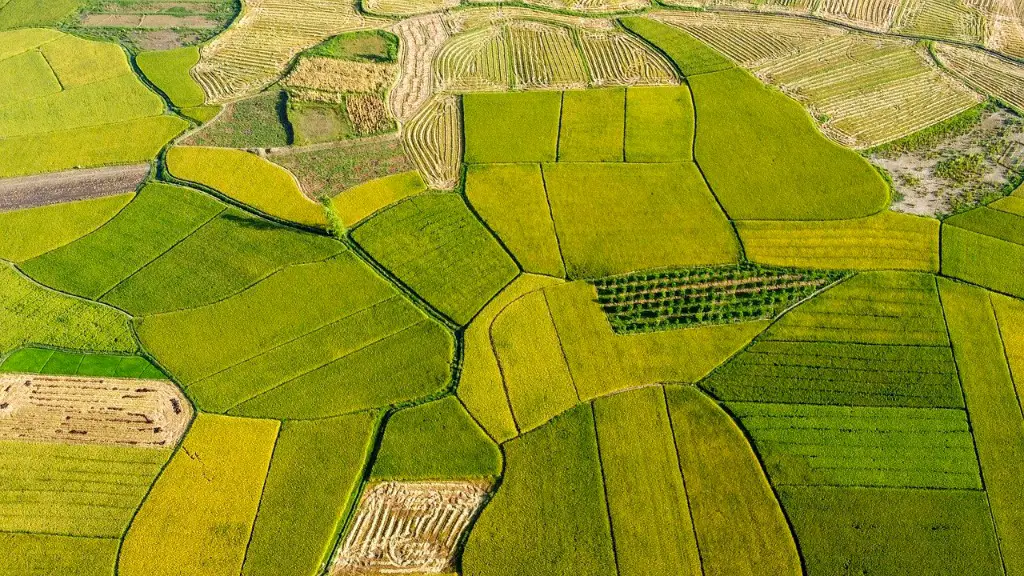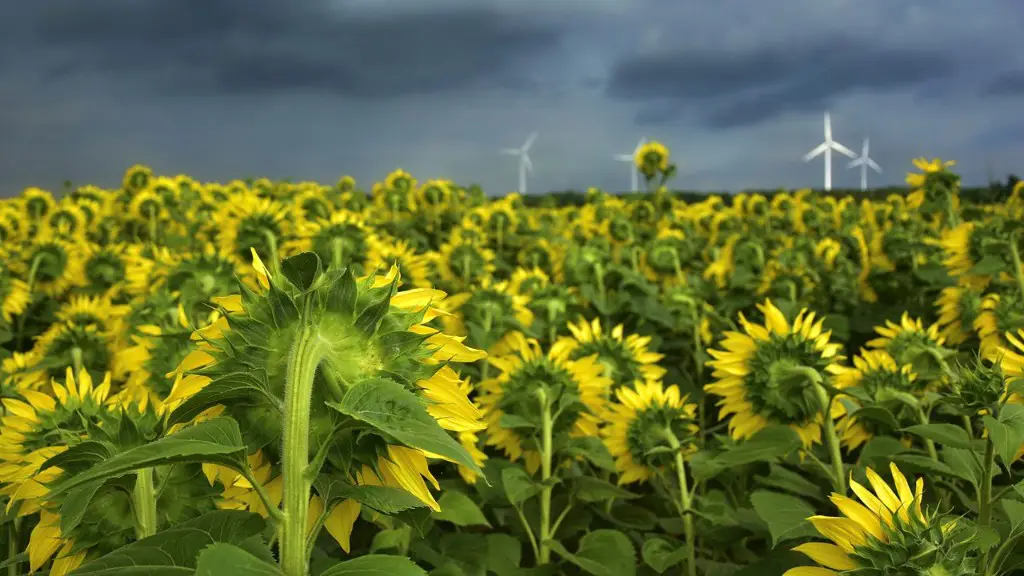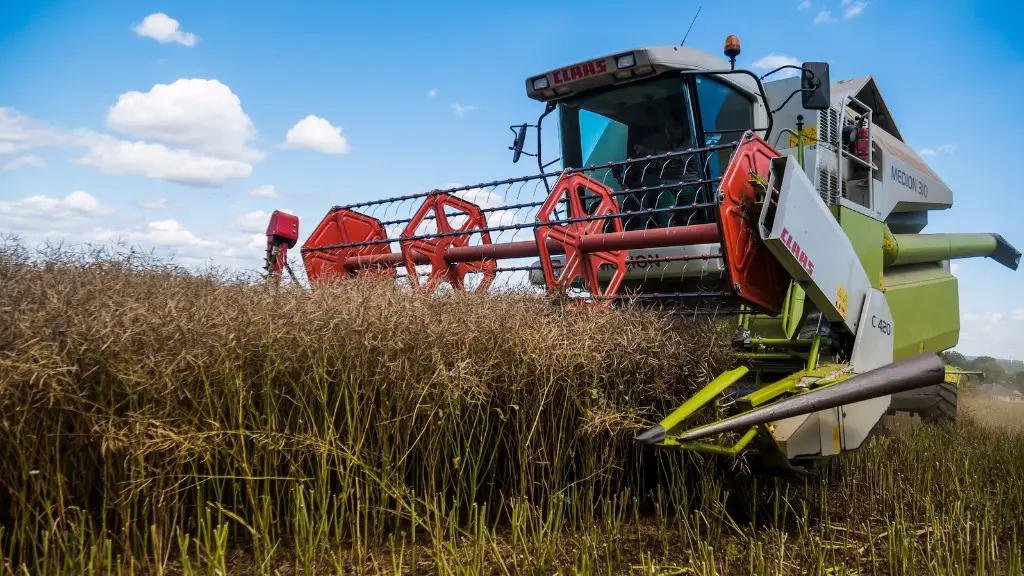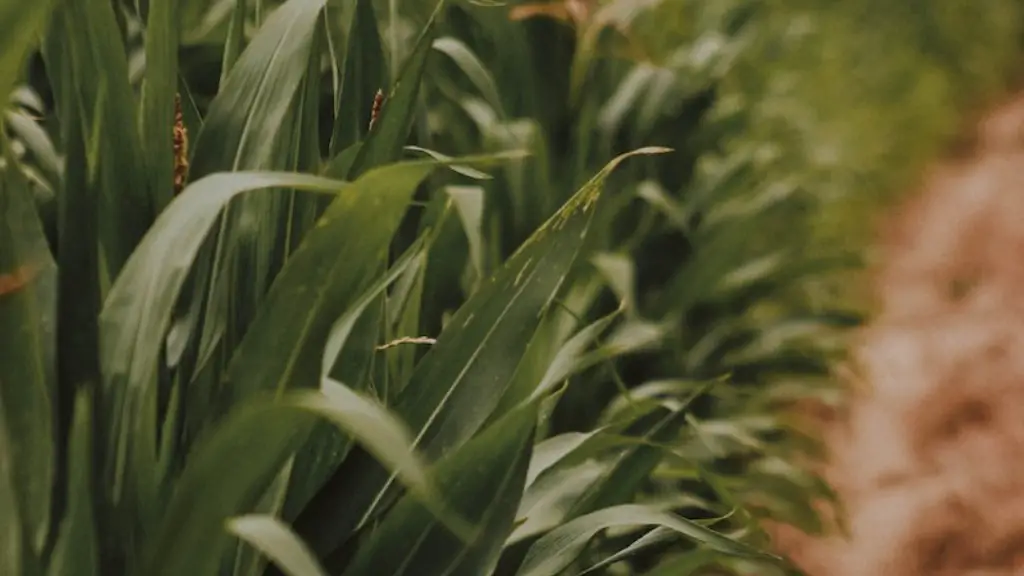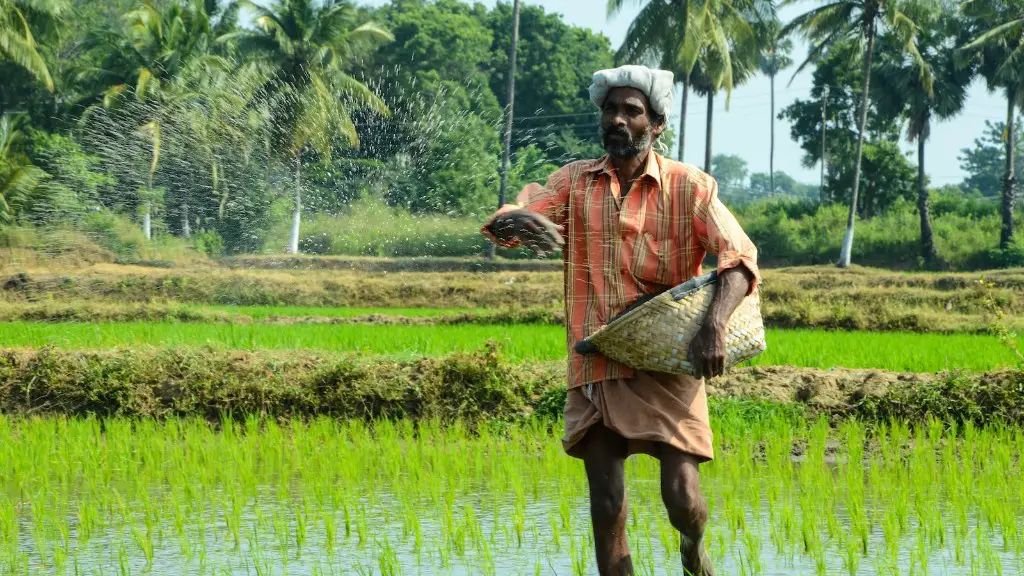Agriculture has been shown to have a significant impact on climate change. Agricultural activities account for approximately 10% of global greenhouse gas emissions, and the sector is a major contributor to deforestation, land degradation, and water scarcity. These impacts are expected to increase as the world population continues to grow and demand for food increases. While agriculture is a major driver of climate change, it is also one of the most vulnerable sectors to its effects. Crop yields are expected to decline as temperatures increase, water availability decreases, and extreme weather events become more frequent. In order to mitigate and adapt to climate change, the agricultural sector will need to make significant changes in the way it operates.
Agriculture is a major contributor to greenhouse gas emissions and therefore to climate change. Agriculture accounts for about 10 percent of global greenhouse gas emissions, with livestock production accounting for about half of that. Climate change, in turn, is expected to have a significant impact on agriculture, including through changes in temperature, precipitation, and extreme weather events.
How much of climate change is from agriculture?
Farming and land conversion are major contributors to climate change. Synthetic fertilizers, diesel-powered farm machinery, and methane-producing livestock all add to the problem. Together, they account for 10% of all climate-affecting emissions from the United States each year.
Agriculture contributes to climate change in many ways. One way is through methane production. Methane is produced by livestock during digestion due to enteric fermentation and is released via belches. It can also escape from stored manure and organic waste in landfills. Methane is a powerful greenhouse gas and its release contributes to climate change.
What are the negative effects of agriculture on the environment
Large-scale, conventional farming is not sustainable in the long term. It contributes to climate change, pollutes air and water, and depletes soil fertility. We need to move to more sustainable farming practices that are less dependent on fossil fuels and synthetic inputs.
Fossil fuels are a major contributor to climate change, accounting for over 75% of global greenhouse gas emissions. Burning fossil fuels releases greenhouse gases into the atmosphere, which trap heat from the sun and cause the Earth to warm. Climate change is a major threat to our planet, and it is crucial that we take steps to reduce our reliance on fossil fuels and transition to cleaner energy sources.
How does agriculture make climate change worse?
The agricultural sector is responsible for a significant portion of global greenhouse gas emissions. The three most significant sources of agricultural GHGs are carbon dioxide from tropical deforestation, methane from livestock and rice production, and nitrous oxide from fertilizing or burning croplands. Agriculture is responsible for approximately half of global methane emissions, making it a significant contributor to climate change.
1. Waste: One of the major causes of global warming is waste. When we throw away items, they often end up in landfill sites where they release methane gas – a powerful greenhouse gas.
2. Power plants: Power plants are a major source of greenhouse gas emissions. Burning fossil fuels such as coal, oil and gas releases these gases into the atmosphere.
3. Oil drilling: Oil drilling is another major cause of greenhouse gas emissions. The process of drilling for oil releases methane gas into the atmosphere.
4. Transport and vehicles: Transport and vehicles are a major source of greenhouse gas emissions. Burning fossil fuels such as petrol and diesel releases these gases into the atmosphere.
5. Consumerism: Consumerism is a major cause of global warming. The production of consumer goods often results in greenhouse gas emissions.
6. Farming: Farming is a major cause of global warming. The production of food often results in greenhouse gas emissions.
7. Industrialization: Industrialization is harmful in a variety of ways. One of the ways it contributes to global warming is by releasing greenhouse gases into the atmosphere.
8. Overfishing: Overfishing is a major cause of global warming. When fish are caught, they
What is the relationship between agriculture and climate change?
Climate change has the potential to disrupt food availability, reduce access to food, and affect food quality. For example, projected increases in temperatures, changes in precipitation patterns, and reductions in water availability could all lead to reduced agricultural productivity. This could have a major impact on food security, especially for vulnerable populations who may not have the resources to adapt. It is therefore important to continue to monitor the situation and take steps to mitigate and adapt to climate change in order to protect food security.
Agriculture is one of the major sources of greenhouse gas emissions, accounting for about 10% of total emissions. The main greenhouse gases emitted by agriculture are carbon dioxide (CO2), methane (CH4), and nitrous oxide (N2O). These gases are produced by a variety of agricultural activities, including animal husbandry, crop production, and soil management.
Agriculture-related emissions are expected to increase in the future as the global demand for food and livestock products grows. As a result, it is important to find ways to reduce these emissions in order to mitigate climate change. Some options include improving agricultural practices, using cleaner-burning fuels, and planting trees and other plants to sequester carbon dioxide.
What is the biggest problem in agriculture
There are two large problems facing agriculture in the modern world. The loss of agricultural land through erosion and manmade factors is one of them. The other is the increasing lack of diversity in crops.
Loss of agricultural land is a serious problem because it reduces the amount of land available for food production. This can lead to higher food prices and even shortages in some areas.
The lack of diversity in crops is also a major problem. This is because it increases the risk of crop failure due to pests or diseases. When crops are more diverse, they are less likely to all be affected by the same problem. This helps to ensure a steady supply of food.
The five environmental effects of agriculture are:
1) Soil fertility loss: When crops are grown, they take up nutrients from the soil, which can eventually lead to soil fertility loss if the nutrients are not replenished.
2) Eutrophication of water bodies: Nutrients from agricultural runoff can cause eutrophication of lakes and rivers, which can lead to the depletion of oxygen in the water and the death of aquatic plants and animals.
3) Deforestation: Agricultural expansion often leads to deforestation, as trees are cleared to make way for new farmland. This can cause problems with soil erosion and loss of habitat for wildlife.
4) Climate change: Agriculture is a major source of greenhouse gas emissions, which contribute to climate change.
5) Pesticide pollution: Pesticides used in agriculture can contaminate water supplies and cause health problems for humans and animals.
Why is agriculture a problem?
There are a number of pressures that farmers are facing today, from climate change and soil erosion to biodiversity loss and changing consumer tastes. Farmers must adapt to these challenges in order to continue to produce food that meets the needs of consumers. The natural world also presents its own challenges, such as plants, pests and diseases, that farmers must be prepared to face.
The increased concentrations of carbon dioxide, methane, and nitrous oxide in the earth’s atmosphere have caused the greenhouse effect to increase, resulting in the earth’s surface temperature to rise. These greenhouse gas emissions have had a significant impact on the planet, and we need to take steps to reduce them in order to mitigate the effects of climate change.
Who is the biggest polluter in the world
China has the world’s largest population and is the leading industrial country, so it is not surprising that it is the biggest emitter of carbon dioxide. However, China is also taking steps to address the issue of climate change and has pledged to reduce its emissions. The other top four polluters – the United States, the European Union, India, and Russia – are also responsible for a large portion of global emissions. All of these countries have pledged to reduce emissions in order to slow the effects of climate change.
The main causes of global warming are carbon pollution and climate change. Energy production is the main source of carbon pollution, which comes from burning fossil fuels such as coal, oil, and natural gas. Climate change is caused by greenhouse gases, which trap heat in the atmosphere and cause the Earth’s average temperature to rise.
How far is man harming the Earth?
As humans have developed and changed over time, so has our impact on the Earth. We have altered the land to better suit our needs, whether it be for farming or simply to keep animals. As a result, at least 70% of the Earth’s land has been directly affected by humans in some way. While this may seem like a large number, it’s actually not all that surprising when you consider how much land we use for our homes, farms, and other activities. Thankfully, we are becoming more conscious of our impact on the Earth and are working to find ways to lessen our footprint.
You can play your part in saving the environment by making some simple lifestyle changes. Here are 10 things you can do to help stop global warming.
1. Change a light – replacing just one 60-watt incandescent bulb with a compact fluorescent light bulb will save 0.02 metric tons of carbon dioxide each year.
2. Drive less – carpooling, taking public transportation, or simply driving less can save 0.11 metric tons of carbon dioxide each year.
3. Recycle more – recycling one glass bottle saves 0.02 metric tons of carbon dioxide.
4. Check your tires – keeping your tires inflated properly can improve your gas mileage by up to 3.3%, saving 0.15 metric tons of carbon dioxide each year.
5. Use less hot water – washing your clothes in cold water instead of hot saves 0.6 metric tons of carbon dioxide each year.
6. Avoid products with a lot of packaging – buy in bulk or look for products with less packaging.
7. Adjust your thermostat – turning your thermostat down just one degree in winter and up one degree in summer can save 0.2 metric tons of carbon dioxide each year.
8
Conclusion
There is a strong consensus among scientists that agriculture has a significant impact on climate change. Agriculture accounts for a significant portion of global greenhouse gas emissions, and the sector is particularly vulnerable to the effects of climate change. As a result, agriculture must play a key role in mitigating and adapting to climate change.
It is clear that agriculture does affect climate change. Agricultural production accounts for a significant portion of greenhouse gas emissions, and the way we produce food can either contribute to or mitigate climate change. With the right policies in place, agriculture can be part of the solution to climate change.
